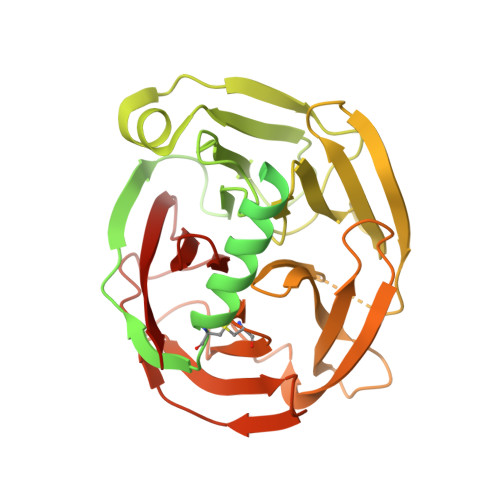Olfactomedin-1 Has a V-Shaped Disulfide-Linked Tetrameric Structure.
Pronker, M.F., Bos, T.G.A.A., Sharp, T.H., Thies-Weesie, D.M., Janssen, B.J.C.(2015) J Biol Chem 290: 15092
- PubMed: 25903135
- DOI: https://doi.org/10.1074/jbc.M115.653485
- Primary Citation of Related Structures:
5AMO - PubMed Abstract:
Olfactomedin-1 (Olfm1; also known as noelin and pancortin) is a member of the olfactomedin domain-containing superfamily and a highly expressed neuronal glycoprotein important for nervous system development. It binds a number of secreted proteins and cell surface-bound receptors to induce cell signaling processes. Using a combined approach of x-ray crystallography, solution scattering, analytical ultracentrifugation, and electron microscopy we determined that full-length Olfm1 forms disulfide-linked tetramers with a distinctive V-shaped architecture. The base of the "V" is formed by two disulfide-linked dimeric N-terminal domains. Each of the two V legs consists of a parallel dimeric disulfide-linked coiled coil with a C-terminal β-propeller dimer at the tips. This agrees with our crystal structure of a C-terminal coiled-coil segment and β-propeller combination (Olfm1(coil-Olf)) that reveals a disulfide-linked dimeric arrangement with the β-propeller top faces in an outward exposed orientation. Similar to its family member myocilin, Olfm1 is stabilized by calcium. The dimer-of-dimers architecture suggests a role for Olfm1 in clustering receptors to regulate signaling and sheds light on the conformation of several other olfactomedin domain family members.
Organizational Affiliation:
From the Crystal and Structural Chemistry, Bijvoet Center for Biomolecular Research and.


















